The 2000 year-old computer
This strange, corroded mechanical device was built around the first century BC and is considered the earliest known computer.
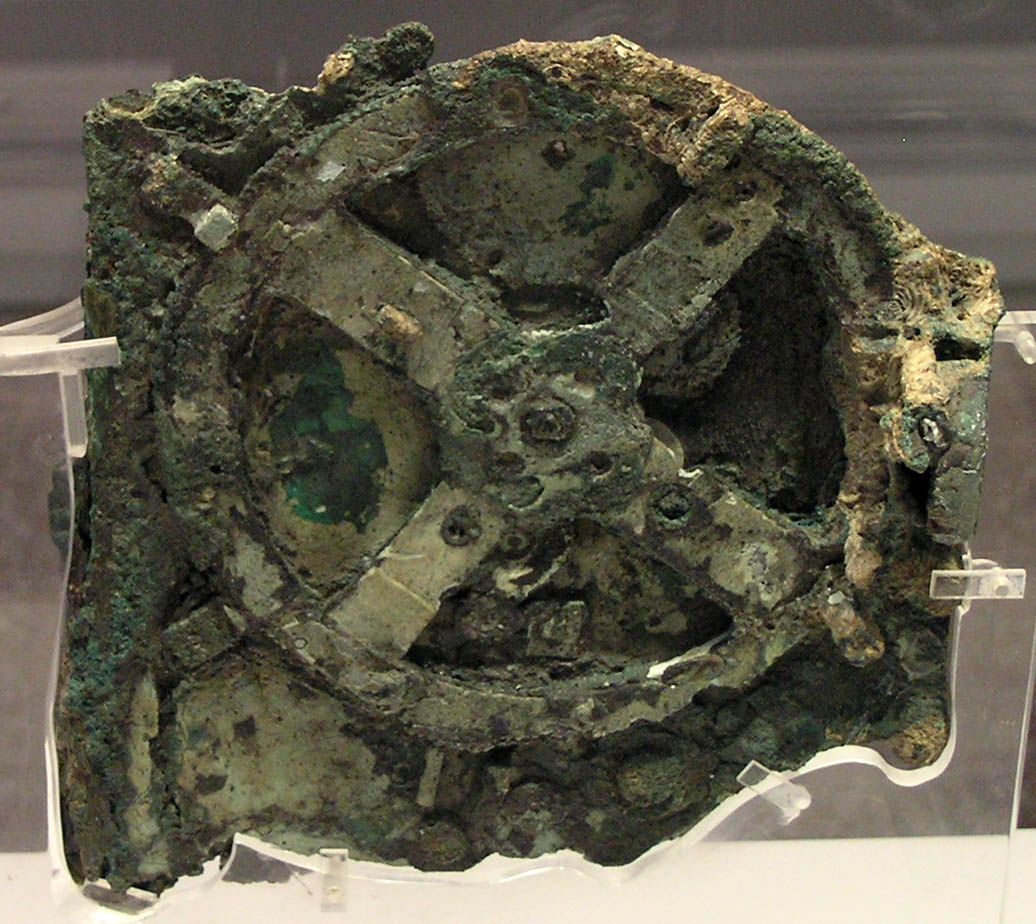
The Mechanism
This strange, corroded mechanical device was built around the first century BC and is considered the earliest known computer. Known now as the Antikythera Mechanism - as it was found off the island of Antikythera and it's a mechanism - it is the most complicated device of its kind from the ancient world.
It was used for calculating the position of the planets, the sun and the moon, timings of eclipses and when the next Olympic games were to be held. Despite this it could neither play Kerbal Space Program or even Daley Thompson's Decathlon.
After it sank to the bottom of the Mediterranean nothing else of similar complexity was built for more than 1000 years.
The Shipwreck
Sometime in the first century BC a ship left Rhodes heading to Rome laden with precious artefacts. Julius Caesar was planning a big party and wanted to show off all the things he had managed to loot from the Greeks. On board, along with coins and statues and other ancient bits and bobs was a gadget about the size of a shoe box that could predict the future.
Sort of... It didn't predict the ship being wrecked and sunk off the coast of Antikythera. I'm sure Julius Caesar still went ahead with his big party anyway, but the ship, the crew, the loot and the most complex mechanical device that had ever been built lay on the sea floor for the next 2000 years.

The Discovery
Sponge divers found the wreck in 1900. It was in 50 metres of water - a bit too deep for SCUBA diving and a bit too shallow for Thunderbird 4. Over the following two years archaeologists recovered coins, statues - including life-size horses, jars and - sadly empty - amphorae. Among the finds was a lump of rock and corroded bronze that was initially put to one side while restoration and examination took place on the shinier and more exciting artefacts. The death of a diver brought the first round of exploration to a close.
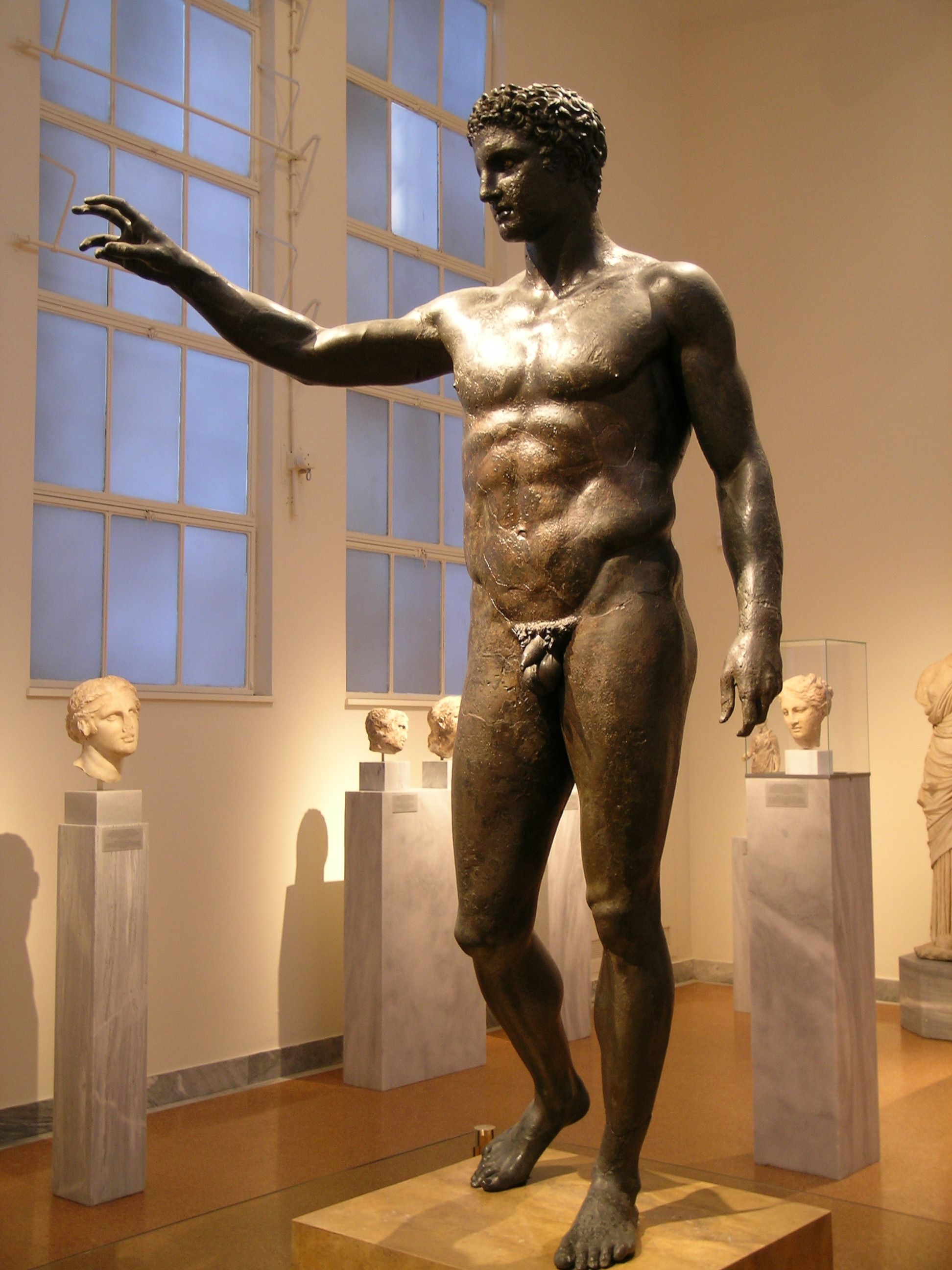
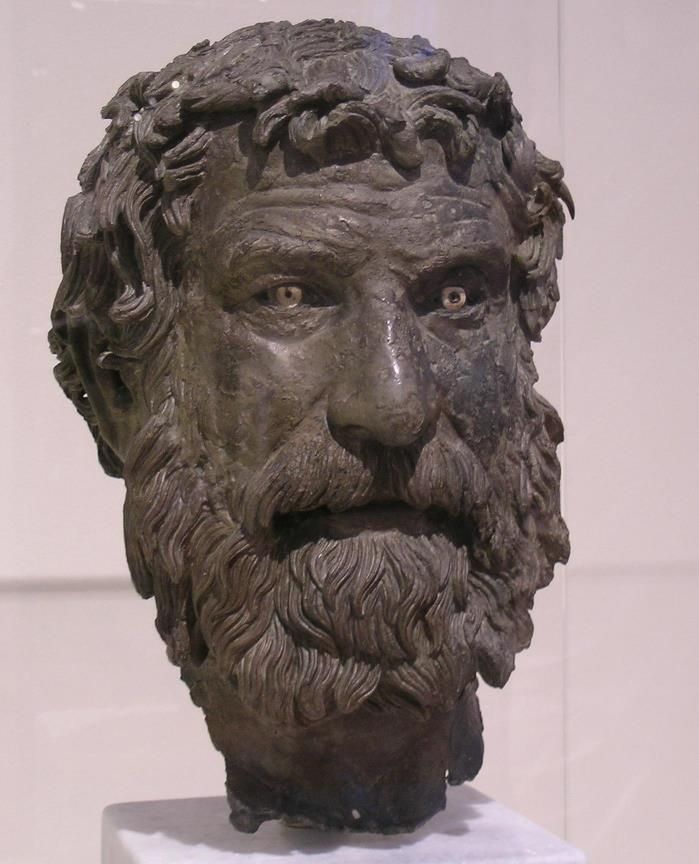
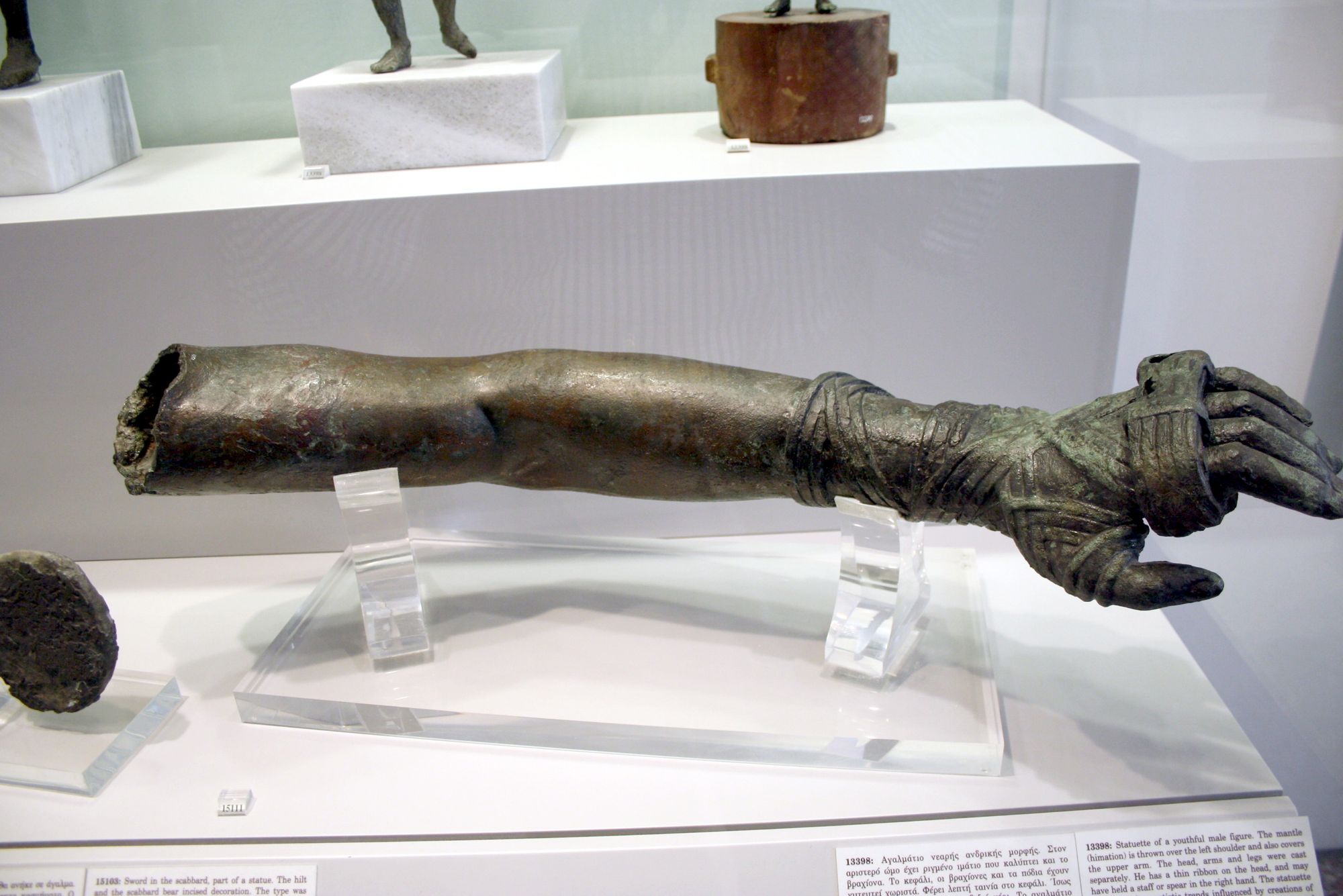
In May 1902 archaeologist Valerios Stais got curious as to why a rock had some gears embedded into and started investigating further. Along with gears some legible Greek writing was present. More 'investigation' led to the single lump breaking into 3 separate lumps and then eventually 82 fragments. My computer works best when its all in one piece but at least the analysis of the fragments helped archaeologists reconstruct replicas of the mechanism. Finally, after 2000 years at the bottom of the sea the inner workings of the oldest known analogue computer were beginning to show their secrets.
The Antikythera Mechanism
The front of the mechanism showed the twelve signs of the zodiac, the Egyptian months transcribed into Greek and the position of at least the sun and the moon. It was operated by a hand crank, after setting the current date into the system you turned the crank and the machine turned the gears updating the positions of the sun and moon as well as the phase of the moon at a rate of 76 days per turn of the handle. It is likely that it also tracked the five known planets, Mercury, Venus, Mars, Jupiter and Saturn - though the parts for that appear to be missing and current reconstructions use all the bits we have without much left over.
On the back of the mechanism were additional dials showing the timings of eclipses and various important athletic games. These included the Ancient Olympic Games as well as the Pythian Games, the Halieiad and the Naa Games of Dodona - none of which I made up.
The devices uses at least 30 gears to operate built in bronze with hand cut teeth. The mathematics behind this is surprisingly accurate for the time, for example the phases of the moon are based on a period of 29.53 days where as the modern value is 29.530589 days - out by less than a minute per month.
The moon indicator also moves faster and slower throughout its rotation to reflect the elliptical orbit of the moon, this requires more complex gearing than showing simply the average period of the orbit. The ancient Greeks were not actually aware of the moon's elliptical orbit however from earth this appears as though the moon moves faster and slower through the sky and this was accurately compensated for.
An interesting thing about this mechanism is that is as it presents the positions of the sun and moon (and planets) from Earth it doesn't actually matter if its designer thought that the sun or the Earth was the centre of the solar system - the output is the same either way.
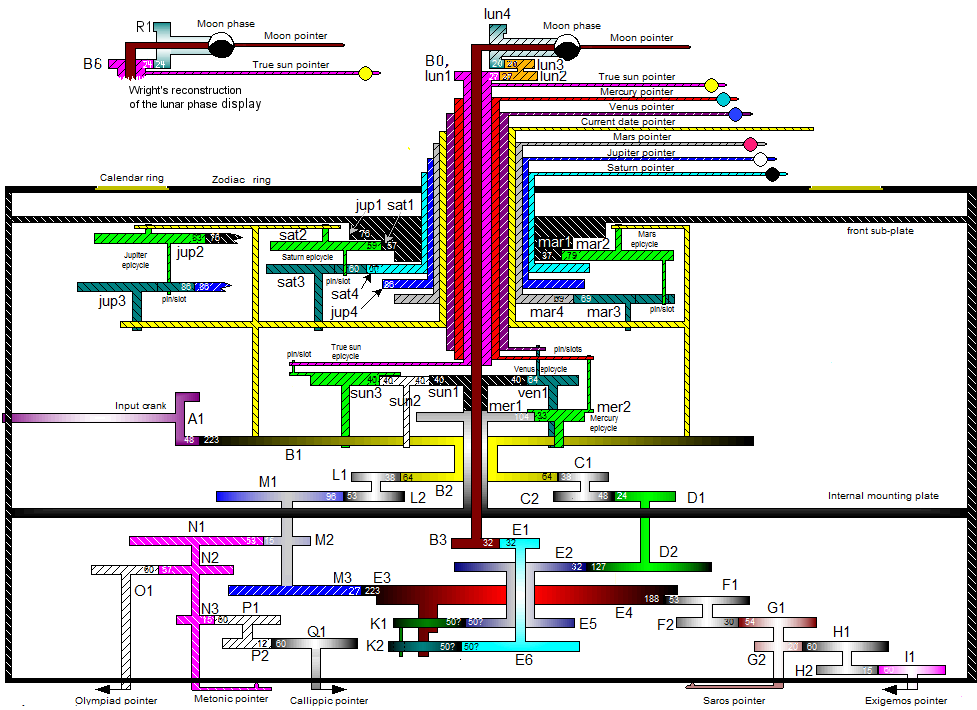
With the signs of the zodiac included scientists believe that it had an astrological as well as astronomical purpose perhaps Mystic Meg can shed some light on this feature.
Unfortunately the engineering accuracy doesn't quite match its mathematical accuracy and the real device wouldn't have been as precise as its designers would've been hoping for. Despite this it is a remarkable complex piece of engineering which seems totally isolated in time.
No earlier geared mechanism of any sort has ever been found. Nothing close to its technological sophistication appears again for well over a millennium, when astronomical clocks appear in medieval Europe. It stands as a strange exception, stripped of context, of ancestry, of descendants.
It seems very unlikely - barring alien intervention - that this device was the first of its kind. There must have been earlier mechanical calendars or orreries before this mechanism, though none have every been found. It also seems likely that if this knowledge was available to the ancient Greeks that other devices would have been made subsequently but again none have ever been found. No mechanical device of this complexity appears to have existed between the first century BC when this gadget was built and the 14th century AD when complex mechanical clocks started to be built.
Closing the gap in the history of technology could involve finding some amazing lost technology from the first few centuries AD or by pretending that the Early Middle Ages never happened at all.
Today
Work is still on going both in investigating the Antikythera shipwreck and the mechanism itself.
Jacques Cousteau lead another trip to the wreck in the 1970s and recovered more artefacts - coins, statues and the remains of some of the crew and passengers that had perished in the wreck millennia earlier. Throughout the 2010s further expeditions have continued to find artefacts from the shipwreck and a another wreck from a similar time found near by. It is thought that there is a lot more still to be discovered at the site.
The mechanism itself is available in ruined replica form, working reconstruction form, T-shirt, Lego and Google Doodle form. The real form is housed in Athens and work continues to find out more about this amazing 2000-year old rock with gears in it.
Image Credits:
- Antikythera modern day Photo by Fivos Avgerinos / Unsplash
- Antikythera Statue By Ishkabibble at the English Wikipedia, CC BY-SA 3.0, https://commons.wikimedia.org/w/index.php?curid=14769420
- Antikythera Philospher By Ishkabibble at the English Wikipedia, CC BY-SA 3.0, https://commons.wikimedia.org/w/index.php?curid=5763197
- Bronze Statue Arm By Giovanni Dall'Orto. - Own work, Attribution, https://commons.wikimedia.org/w/index.php?curid=28798337
- Header Image Wikimedia Commons
- Gear diagram By SkoreKeep - Own work, CC BY-SA 3.0, https://commons.wikimedia.org/w/index.php?curid=33538164
Other Resources:
- In search of lost time - Jo Marchant - https://www.nature.com/articles/444534a
- Wikipedia - https://en.wikipedia.org/wiki/Antikythera_mechanism, https://en.wikipedia.org/wiki/Antikythera_wreck, https://en.wikipedia.org/wiki/Antikythera_Ephebe
- Woods Hole Oceanographic Institution - https://www.whoi.edu/know-your-ocean/ocean-topics/underwater-archaeology/antikythera-shipwreck/
